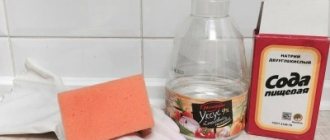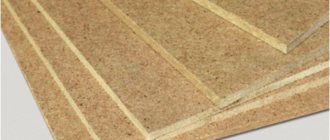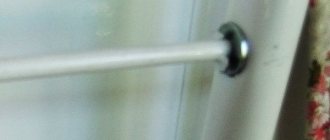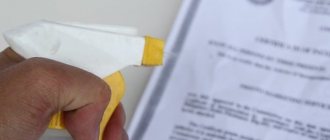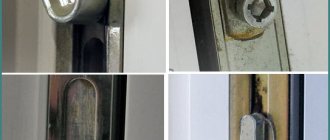Many people have experienced clogs in their sewer pipes. More often, a paid service is called to clean it. Wasting money can be avoided because there are methods for cleaning sewer drains yourself. For example, it is common to use caustic soda to clean sewers. This is a caustic substance with which you can independently remove any blockage.
Weighing Caustic Soda
What is
Caustic soda, as caustic soda is also called, is widely known throughout the world as an alkali that can corrode organic matter.
Of all three types of soda - baking soda, soda ash and caustic soda, the latter has the greatest cleaning power. Outwardly it looks like a powder consisting of light crystals or flakes, odorless, ranging in size from 1.5 to 2 cm (pictured).
What is the danger
According to the European classification, caustic soda is included in the second group in terms of danger level and is characterized as a caustic or corrosive substance.
She is capable of:
- cause severe chemical burns;
- cause irritation of the cornea or skin;
- injure the respiratory tract;
- cause metal corrosion.
Important. If timely assistance is not provided, contact of caustic alkali on mucous membranes or skin can cause irreversible consequences, such as blindness.
To avoid the negative effects of a substance on the body, you need to protect yourself.
Compound
Another name for caustic soda is sodium hydroxide. The structural formula of the substance is NaOH, indicating the presence of sodium, oxygen and hydrogen molecules in it. It is not found in its pure form; caustic is produced industrially from a solution of table salt. The norm for the content of caustic soda is at least 98.5%. Available in liquid and solid form. Transportation and sale are carried out in containers and bags, respectively.
Solid caustic granules dissolve well in water with the release of heat.
It differs from soda ash in its chemical formula - sodium carbonate has the composition Na2CO3. In addition, caustic soda is more aggressive and poses a certain danger to humans.
Production
Until the 17th century, various substances were called soda and no research was carried out on these substances. With the growth of industrial production, the need for these products has increased. Then various studies and experiments began on the industrial production of soda. In 1736, Henri Monceau was able to divide the common name into three chemical compounds: soda itself - sodium carbonate, potassium carbonate and sodium hydroxide. In 1764, a chemical method for producing soda was discovered.
Over the century, several options for the production of soda were proposed (ammonia, lime), but only the lime method, which existed until the 20th century, was widely used. Today, a similar technique (Figure 2) is used as an experiment for chemistry lovers.
Figure 2 – Chemical method for producing caustic soda
At the end of the 19th century, a new method for producing caustic soda appeared - electrochemical, which is still used today.
The need for caustic soda is only growing from year to year. Russia occupies only 1% of production on the world market (Figure 3). The leaders in both consumption and production of sodium hydroxide are China, the USA and the European Union.
Figure 3 – Production and consumption of caustic soda in the world
At the same time, in the Russian Federation itself the market is filled with domestic products. The main Russian manufacturers are coping with market needs (Figure 4). It is worth noting that the caustic soda market in the Russian Federation is developing more slowly than global markets.
Figure 4 – Main Russian producers of caustic soda, their share in total production
Advantages and disadvantages
The advantages of caustic include:
- quick and effective removal of organic contaminants;
- ease of use for cleaning sewer pipelines;
- the ability to dissolve in water with the release of a large amount of heat;
- does not harm rubber, pipes made of plastic, steel, cast iron;
- availability of purchase.
Alkali has disadvantages that you have to put up with and beware of their manifestation:
- potent substance, highly toxic;
- can only decompose organic substances;
- negatively affects galvanized, aluminum, enamel coatings;
- may evaporate, so storage is carried out only in a closed form;
- limited shelf life (up to 12 months), after which the alkali loses its characteristic qualities.
Preparation of caustic soda solution
In order to dilute soda with water, you should follow certain rules:
Preparation of the solution
- the container must be resistant to alkali, for example, a thick-walled plastic bucket with a capacity of up to 12 liters is suitable;
- to prepare the product you need to take only cold water;
- You cannot pour water into the alkali, you must add soda to it, otherwise the resulting hot alkali may splash;
- since a large amount of heat is released during the dissolution process, the reagent must be added in small portions, with gentle stirring;
- a hot solution emits caustic fumes, so it is better to use a gauze mask;
- It is preferable to prepare the caustic solution in the open air; if this is not possible, then you should open the window to ventilate the room;
- For 7 liters of H2O, usually from 2 to 4 kg of soda is taken, depending on the type of residential building and sewage system.
Rules of application
It is necessary to use sodium hydroxide in compliance with certain rules so as not to cause harm to the environment and your health.
- Storage of caustic soda is allowed at a certain temperature and humidity conditions, in tightly closed containers due to its high hygroscopicity.
- It is important to remember that alkali destroys galvanized, aluminum and enameled surfaces.
- Before using cleaning powder or gel, carefully read the manufacturer’s instructions, pay attention to the proportions of dilution with water and the time the solution remains in the pipes before flushing.
- The room where work with caustic sodium is carried out must be well ventilated.
- The unspent remains of the alkaline solution are poured into an alkali-resistant container, tightly closed and placed in a cool room.
- After completion of work operations, the entire surrounding area is cleared of alkaline residues.
Making homemade soap
Soda is one of the components of soap that can be made at home, and its cleaning ability will depend on the amount of soda. Required components:
- Oil (linseed, olive) - 500 ml.
- Caustic soda - 200 g.
- Essential oil - a few drops.
The cooking process is quite simple:
- Heat the oil in a water bath.
- Add soda to two hundred grams of hot water and mix.
- Add oil to the soda solution, add essential oil, stir until a homogeneous viscous mass is obtained.
- Pour into molds and leave for several days until completely dry.
Sodium is an inexpensive and widely available product . You just need to follow the instructions for using caustic soda, and it will become an excellent assistant in housekeeping and keeping your home clean.
Precautionary measures
- Caustic soda is a potent substance; in terms of its danger to humans, GOST classifies it as the second hazard class.
- The crystal powder should not be taken by hand; it should either be carefully poured out of the bag or a spoon should be used.
- Contact with skin results in burns. In this case, wash the affected area of skin with water, weakly concentrated solutions of boric or acetic acid.
- The greatest danger is if the solution gets into the eyes, resulting in loss of vision. Measures are taken immediately: the eyes are also washed, first with the above solutions, then with water.
- Therefore, it is better to protect yourself from direct contact with caustic sodium using personal protective equipment: rubber gloves, special goggles for eye protection, and overalls.
So where is it used?
Its scope of application covers many industries. Among them:
- chemical industry (caustic soda is used for titration of aluminum, neutralization of acids, production of detergents and various oils, and also as a reaction catalyst);
- pulp and paper industry (for the production of various types of paper, cardboard, wood fiber boards, etc.);
- food industry (as a food additive E524 for the production of various drinks, ice cream, chocolate, etc., as well as for cleaning food equipment);
- automotive industry (for the production of alkaline batteries);
- light industry (as a bleach for fabrics, mainly cotton, linen, and also in the production of silk);
- for the production of biofuel.
How to clean drains with caustic soda
Caustic sodium can be used to clean your home sewer system.
However, for an effective result certain conditions are required.
- It is very important that the water flows at least slowly into the drain.
- The clog should only be fat with hair. Caustic will not remove scale or insoluble salt deposits.
- Hot water is used to dissolve the alkali and wash the network - 70-90 degrees.
The product is also suitable for cleaning plastic pipes.
Flushing with solution
If the blockage has formed far from the drain, directly in the pipe, use a large amount of alkali.
- Take 3 kg of caustic soda and dilute it in 7 liters of hot water.
- The solution is thoroughly stirred.
- The finished mixture is poured into the hole in a continuous stream.
- You will need a respirator to avoid inhaling harmful fumes from dissolved alkali.
- After 2-3 hours, wash with plenty of water.
How to properly dilute a solution with alkali?
- First, pour water into the container!
- Then the powder is poured, it can be of different fractions: granules, flakes, small or large crystals.
- It is necessary to stir the mixture until the particles are completely dissolved.
- Therefore, the powder should be poured in portions, and not all at once. Otherwise, a violent reaction and splashes may occur. In addition, it must be taken into account that the temperature in the container will rise significantly.
A solution with sodium hydroxide is used in private homes to clean cesspools and sewer wells.
Prepared at the rate of 4 kg per cubic meter of sewage, it is poured into the pit and after 2-3 days the liquid leaves it, leaving a silty sediment at the bottom.
Dry method
Pour 100 grams (5-6 tablespoons) of sodium hydroxide powder into the sink or drain hole.
Pour a glass of hot (80-90) water.
The procedure is repeated several times until a positive result is achieved.
Rinse with plenty of hot water.
This method is used for minor blockages near the drain hole.
Using the gel
Most strong cleaning products contain caustic soda. Gels have proven to be effective cleaners in apartments.
To successfully clean the drain, warm it well with hot water.
Shake the container with the gel and, according to the manufacturer's instructions indicated on the plastic container, pour the required amount of content into the drain hole.
After a certain time, the sewer is flushed.
Operating principle
Caustic sodium has an aggressive effect on various types of contaminants. It dissolves dirt and softens the plaque layer. After the substance has worked for several hours, you need to pour a large amount of water into the pipeline to wash away the contaminants.
Caustic soda can be used to dissolve organic waste in plastic pipes. Polymers are inert materials that do not react with chemicals. Dirt slowly accumulates on the smooth plastic walls.
Sewer plastic pipes (Photo: Instagram / armada_tmb)
Reviews
On the Internet on forums, caustic soda receives mostly positive reviews, various cleaning recipes are offered, and there are many videos about the use of the substance. One of them is offered to your attention.
https://youtu.be/u2Un0-NrFdQ
At the same time, forum members emphasize that caustic soda is not a panacea for all blockages in sewer systems. Complex, stagnant blockages can only be cleared mechanically: with a cable or by dismantling a plastic pipe, where possible, followed by cleaning.
Cleaning the cesspool
Caustic soda is suitable not only for cleaning pipelines and sewer drains. With its help, you can destroy organic waste that has accumulated in the cesspool. Cleaning process:
- Visually inspect the pit. Insects should not spread caustic soda particles over the adjacent area.
- Check the cesspool ventilation system.
- Prepare the solution. You will need 4 kg of the finished composition per 1 cubic meter of organic waste in the pit.
- Fill the hole with the prepared solution. Wait 10 minutes.
If there is too much waste, you can repeat the procedure several times.
Cleaning cesspools with caustic soda is not the best way to eliminate sewage, since soda can poison the soil.
Cesspool (Photo: Instagram / dream_apartments_blyad)
